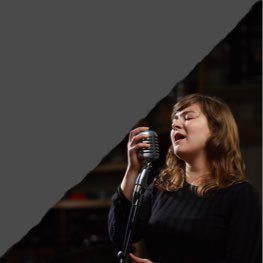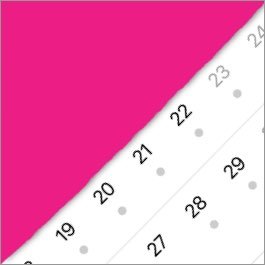IMPROVISING IN A BOOGIE-WOOGIE STYLE
By JJ Wheeler – musician, teacher and record producer
Achieving widespread popularity in the 1920s, the boogie-woogie style originated in the African-American communities of the 1870s. Closely related to blues music, it features many similarities, particularly in its traditional use of the 12-bar structure and reliance on chords I, IV and V. It does however use these elements in a much more upbeat and positive style and is often used as music for dancing, with its fast flowing bass-lines and driving rhythm section grooves.
Originally performed on the piano, it has seen growth in instrumentation through piano duos and trios, guitar, big band arrangements and many other wide-ranging ensembles. Sometimes people call the style ‘8 to the bar’ in reference to the traditional use of constant quavers or ‘8th notes’ in the bass-line or left hand of the piano particularly. Boogie-woogie pianists are predominantly known for their strength and loud volumes, created by ‘bashing’ out the melodies and accompaniments, with frantic soloing in the upper registers.
Traditional styles were played at rent parties during the great depression, and in bars and drinking establishments, often by unschooled musicians on poorly kept instruments. This created a raw, ragged, percussive sound, only somewhat masked by the frantic and uplifting pace of the music. Today, the style is often referenced in popular culture, particularly when trying to convey a ‘retro’ feel, often associated with the 1930-50s, jive dances and similar period upbeat occasions.
Improvising in a boogie-woogie style
The first important point to make is that the style is infectiously upbeat. Whatever you play, it needs rhythmic drive and a huge amount of energy; there’s no hiding or shying away in boogie-woogie music. It’s also important to check out whether the song is played in a ‘swung’ or ‘straight’ feel.
Think rhythmically: it’s called ‘8 to the bar’ for a reason, so try to string long passages of quavers (8th notes), triplets or semi-quavers (16th notes) together in melodic phrases, to create authentic boogie-woogie phrasing. These should have a real forward momentum, either sitting exactly on or even in front of the beat, pushing the song along.
The harmony in this style is usually quite simple, following traditional I – IV – V – I and 12-bar blues structures, so make sure you get to grips with the chord-scales and how to outline these effectively. Informed use of melodic phrasing can also help to shape and outline the form of harmonic sequences, by starting and ending phrases in places which show the start and end of the structure. For example, try creating a phrase for 4 bars, performing a development for another 4 bars, and then returning to the first phrase with minor embellishments for the last 4 bars, creating a 12-bar structure. Then, at the top of the next 12 bars, you can introduce a new idea and repeat the exercise, as a basic way to outline the shape of the piece.
It is worth checking out traditional boogie-woogie bass-lines, particularly for bassists and pianists. These usually have a simple 1 bar pattern constructed of arpeggiated or scalic patterns in quaver (8th note) pulse, which is then transposed depending on the chord required. Shuffle accompaniments are regularly heard in boogie-woogie music as well. Blue notes are also commonplace in boogie-woogie music, such as the flat 3, flat 7 and diminished 5th. This is common to the blues scale.
Example improvising videos
Watch videos with session musicians and Rock & Pop examiner JJ Wheeler and session musicians Harry the Piano for tips and ideas on how to improvise in a boogie-woogie style:
Influential artists
Albert Ammons was a popular boogie-woogie pianist from Chicago in the 1930s and 40s. As the son of two pianists, he learnt to play fluently by the age of 10 and grew to love boogie-woogie thanks to his friend and other influential boogie-woogie pianist, Meade Lux Lewis. The pair practiced together, and later performed at parties and bars around Chicago. Ammons then moved to New York where he teamed up with pianist Pete Johnson, playing regularly at the Cafe Society. Famous recordings of Albert Ammons performances include ‘Shout for Joy’, ‘Swanee River Boogie’ and ‘Boogie Woogie Dream’.
Britain’s greatest exponent of boogie-woogie is the pianist, band-leader and television presenter, Jools Holland, who originally came to national attention with the band Squeeze in the late 1970s. He began his solo career in 1978 with the EP Boogie Woogie ’78 and regularly cites the boogie-woogie style as his greatest influence. His long-established Big Band still performs around the world and he has collaborated with many artists, including Sting on ‘Seventh Son’, Eric Clapton on ‘What Would I Do Without You’, Tom Jones on ‘It’ll Be Me’ and Mark Knopfler on ‘Mademoiselle Will Decide’.
Boogie-woogie Spotify playlist
We've pulled together a playlist of boogie-woogie songs for further inspiration and ideas. Follow our Spotify profile and playlists to easily find the playlists whenever you want to have a listen.
About JJ Wheeler
JJ Wheeler is a professional touring and session drummer and percussionist, teacher and record label producer. He has worked with artists such as Celine Dion, worked on West End musicals including The Bodyguard and regularly performs in a range of bands across the UK and abroad. JJ runs workshops, clinics and masterclasses all over the world, and is also a Trinity Rock & Pop examiner







